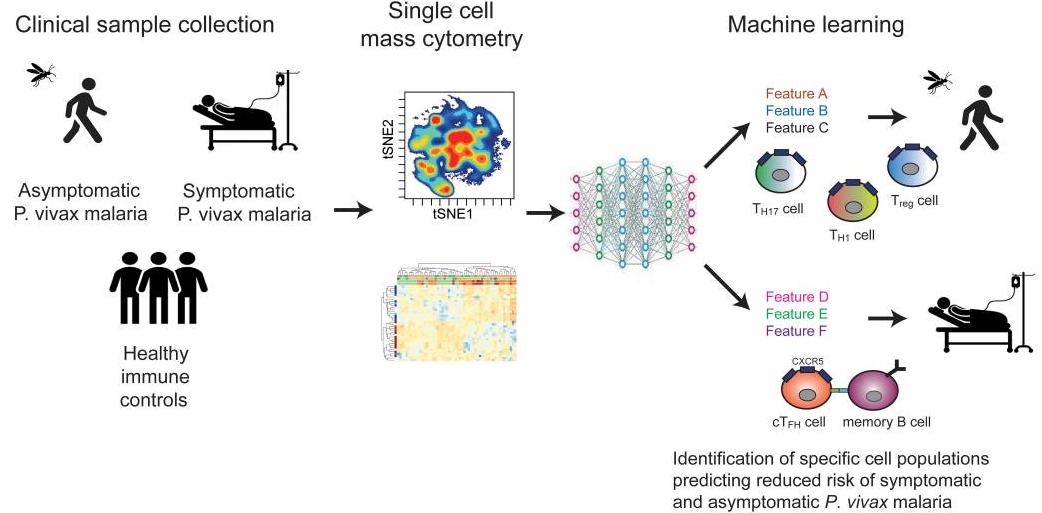Immunomics Services
B-Cell Protein Profiling by CyTOF
Mass spectrometry (CyTOF) can now quantify more than 40 features of thousands to millions of individual cells simultaneously in each experiment. Thus, there is the opportunity to detect virtually all cell types, from the earliest to the most mature, within a given system by simultaneously measuring enough identifying markers in a single sample. CD Genomics provides professional services to help clients profiling and analyze B cells.
Why Do We Study B-cell Protein Profiles?
B cells are differentiated from hematopoietic cells found in the bone marrow. Immunoglobulin (Ig) receptors are assembled on the surface of B cells and specifically recognize individual antigens. Different gene rearrangements during development result in differential expression of Ig surface receptors. Mature B cells migrate to the lymph nodes and spleen and subsequently become further transformed into memory B cells or plasma cells. Analysis of B-cell protein profiles using CyTOF facilitates further study and identification of functional B-cell subpopulations in the context of homeostasis, vaccination, infection, autoimmunity, and cancer.
Applications of CyTOF in B-Cell Protein Profiling
CyTOF is a powerful single-cell immunoassay tool that has been used to dissect B-cell complexity. This tool is of particular interest in the discovery of new cell populations and the identification of biomarkers.
- CyTOF Profiles B-Cell to Predict Risk of Plasmodium vivax
IFN-γ-driven malaria responses are considered a double-edged sword, as they have been shown to be involved in the control of parasitemia, but also play a role in the development of clinical symptoms. High-dimensional single-cell mass spectrometry identified specific subpopulations of memory CD4+ T cells and memory B cells (MBCs) expressing the TH1-defined transcription factor T-bet that are associated with increased or decreased risk of infection with Plasmodium vivax, suggesting that IFN-γ-driven malaria responses support the development of diverse responses that have the potential to cause different infection outcomes.
 Fig.1 Workflow of CyTOF Identifying B-Cell to Predict Risk of Plasmodium vivax. (Ioannidis, L. J., et al., 2021)
Fig.1 Workflow of CyTOF Identifying B-Cell to Predict Risk of Plasmodium vivax. (Ioannidis, L. J., et al., 2021)
Our Services
CyTOF is an advanced multidimensional analysis technique for protein expression that facilitates multiparametric immunophenotyping of individual cells. CD Genomics has an advanced mass cytometry platform that relies on the use of antibodies labeled with stable metal isotopes to stain cells, which are then analyzed by time-of-flight mass spectrometry.
Our proficient team will generate a complete study plan detailing areas such as study design, regulatory compliance, methodology, data collection and analysis, and reporting. Depending on your needs, we can provide guidance on optimal sample stability, including sample collection based on the assay designed.
Panel Customization
At CD Genomics, we offer both off-the-shelf and custom panels. Our experts will guide you in selecting the right samples to achieve your goals and gain maximum insight from your samples. Given the capabilities of our advanced CyTOF, we can support and guide you through all phases of your research project.
Multiple Sample Types
We work with all types of samples and provide in-house sample procurement, preparation, stimulation, or stabilization when needed, which includes but is not limited to the flowing.
- Whole Blood
- PBMC (Fresh or Frozen)
- Bone Marrow Aspirates
- Isolated Tumors/Tissues
- Cells
Workflow of B-Cell Protein Profiling by CyTOF

Why Choose Us
The scientists at CD Genomics are experts in CyTOF and immunology, which ensures that you are properly advised on assay design and get the best possible panel setup. Please contact us for more information.
Reference
- Ioannidis, L. J., Pietrzak, H. M., Ly, A., Utami, R. A., Eriksson, E. M., Studniberg, S. I., ... & Hansen, D. S. (2021). High-dimensional mass cytometry identifies T cell and B cell signatures predicting reduced risk of Plasmodium vivax malaria. Jci Insight, 6(14).
